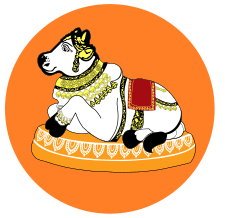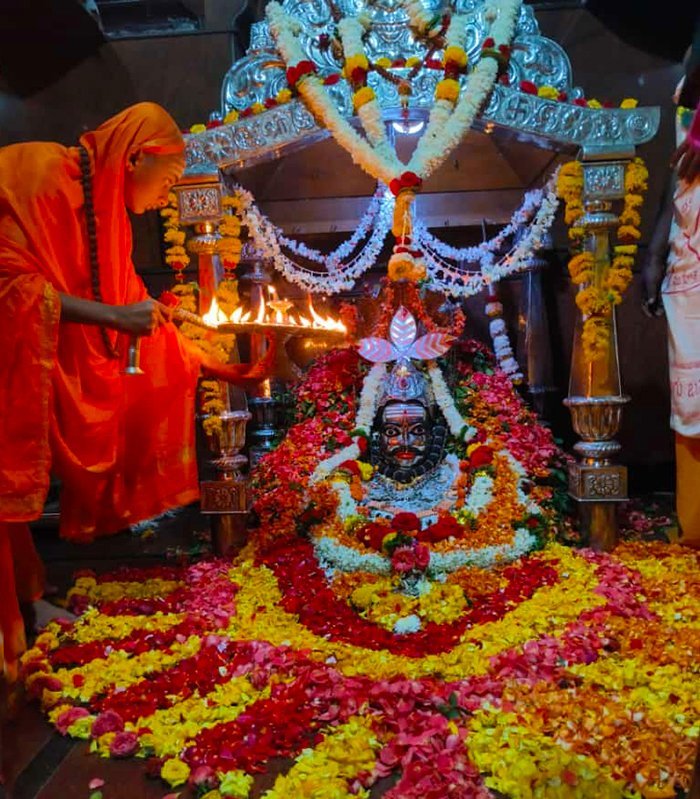
Veerabhadra Temple, Yadur
Shri Veerabhadra Temple, is situated in the holy Shri Kshetra Yadur, on the banks of holy river Krishna in Chikodi Taluka of Belagavi District, Karnataka, India,
Temple History 🛕
Veerabhadra Temple, Yadur
The Veerabhadra Temple in Yadur, Karnataka, is a significant and ancient temple dedicated to Veerabhadra, a fierce manifestation of Lord Shiva. This temple is situated in the small village of Yadur, which is in the Belagavi district of Karnataka. The history of the Veerabhadra Temple is rich with cultural, religious, and architectural importance.
Historical Background
Origins and Mythological Significance
The Veerabhadra Temple’s origins are deeply rooted in Hindu mythology and religious history. Veerabhadra, the deity to whom the temple is dedicated, is a fierce and powerful form of Lord Shiva. According to legend, Veerabhadra was created by Lord Shiva to avenge the death of his consort, Sati. Sati’s father, Daksha Prajapati, had organized a great yajna (sacrifice) but deliberately did not invite Shiva. Angered by this insult and the subsequent death of Sati, Shiva created Veerabhadra to destroy Daksha’s yajna and punish those who had insulted him.
Historical Development
The temple in Yadur is believed to have been established during the early medieval period, around the 9th to 12th centuries, although exact dating can be challenging. The region was under the influence of various dynasties over time, including the Chalukyas and the Vijayanagara Empire. The architectural style of the temple reflects the classical South Indian Dravidian style, characterized by intricately carved pillars, massive stone structures, and elaborate sculptures.
Architectural Features
The Veerabhadra Temple is an exemplar of South Indian temple architecture. Key features include:
Main Sanctum: The central sanctum houses the deity Veerabhadra, depicted as a fierce and powerful figure. The idol is usually carved in stone and adorned with elaborate decorations.
Pillars and Carvings: The temple is known for its beautifully carved pillars and walls, which feature intricate depictions of various deities, mythological scenes, and geometric patterns. These carvings not only serve an aesthetic purpose but also provide insights into the artistic and religious sensibilities of the period.
Mandapas: The temple includes several mandapas (pillared halls) used for various religious and ceremonial functions. These mandapas are often supported by ornately carved columns, reflecting the high level of craftsmanship of the builders.
Gopuram: The temple features a traditional gopuram (gateway tower), which serves as a monumental entrance to the temple complex. The gopuram is often adorned with intricate sculptures and carvings.
Cultural & Religious Significance
The Veerabhadra Temple is a center of cultural and religious activities in the region. The annual festivals and rituals conducted here attract devotees from various parts of Karnataka and Maharashtra. Major festivals include:
Veerabhadra Jayanti: Celebrated annually, this festival marks the birth of Veerabhadra. It involves elaborate rituals, processions, and cultural events.
Rathotsava: The chariot festival, where the deity’s idol is taken out in a grand procession on a decorated chariot, is a major event that sees large participation from the local community.
The temple serves not only as a religious center but also as a repository of local traditions and cultural heritage. It plays a crucial role in preserving and promoting the cultural identity of the Yadur region.
Modern-Day Relevance
Today, the Veerabhadra Temple continues to be a significant pilgrimage site. It attracts devotees and tourists interested in exploring South Indian temple architecture, mythology, and culture. Preservation efforts have been undertaken to maintain the temple’s historical and architectural integrity, ensuring that future generations can appreciate its rich heritage.
Conclusion
The Veerabhadra Temple in Yadur stands as a testament to the religious fervor, artistic brilliance, and historical depth of Karnataka’s temple architecture. Its historical narrative, from its mythological origins to its contemporary role as a cultural and religious landmark, underscores its importance in the region’s heritage.
Temple Timings 🕒
Veerabhadra Temple Timing
The Veerabhadra Temple in Yadur, Karnataka, typically follows traditional temple timings common to many Hindu temples in South India. Although specific timings can vary slightly depending on the day and local customs, the general schedule is as follows:
Daily Timings:
- Morning Darshan: 6:00 AM to 12:00 PM
- Afternoon Break: 12:00 PM to 4:00 PM
- Evening Darshan: 4:00 PM to 9:00 PM
Special Timings:
During festivals or special events, the temple may have extended hours or additional rituals. It’s always a good idea to check with local sources or the temple administration for any changes in timings during such periods.
Additional Notes:
- Poojas and Aartis: The temple usually performs various poojas and aartis throughout the day. Specific times for these ceremonies may vary.
- Holiday Schedule: On major religious holidays and festivals, the temple might open earlier and close later to accommodate increased crowds.
For the most accurate and up-to-date information, especially if planning a visit, contacting the temple directly or checking with local authorities in Yadur would be beneficial.
Temple Activities 🪔
Veerabhadra Temple Activities
The Veerabhadra Temple in Yadur, Karnataka, is known for its rich array of religious activities and rituals that are integral to its function as a place of worship and cultural heritage. Here’s a detailed overview of the key activities and ceremonies performed at the temple:
Daily Rituals & Activities
Abhishekam (Ritual Bathing): This involves pouring various sacred substances such as milk, honey, and water over the deity’s idol. It is performed several times a day, especially during the morning and evening.
Poojas (Worship): Regular poojas are conducted to honor the deity Veerabhadra. These include:
- Sankalpam: A ritual of making a vow or offering prayers.
- Archana: Offering flowers and reciting hymns to the deity.
- Naivedyam: Offering food to the deity, which is later distributed as prasad (sacred offering) to devotees.
Aartis (Light Offerings): Aartis are performed to the deity using lamps. This ritual involves singing devotional hymns and waving the lamps in front of the deity. Aartis are typically conducted in the morning and evening.
Pallakki Seva: This is a form of worship where the deity’s idol is placed on a decorated palanquin, and a procession takes place within the temple premises.
Sudarshan Pooja: A ritual involving the worship of the Sudarshan Chakra (a divine weapon of Lord Vishnu), which is an integral part of many South Indian temples.
Weekly & Monthly Rituals
Rituals on Specific Days: Certain days of the week or month may be designated for special worship practices. For example, Mondays are considered auspicious for Shiva worship, and special poojas or aartis might be conducted on these days.
Monthly Abhishekam: Special abhishekam rituals are performed monthly, often coinciding with significant lunar phases or religious observances.
Cultural & Community Activities
Religious Discourses and Bhajans: The temple often hosts religious discourses, devotional singing sessions, and bhajans (devotional songs) that are open to the public.
Community Feasts: On special occasions and festivals, the temple may organize community meals or prasad distribution to devotees.
Educational and Social Initiatives: The temple may be involved in local educational and social initiatives, such as organizing events for the betterment of the community.
The Veerabhadra Temple in Yadur is a vibrant center of religious and cultural life, with a rich tapestry of rituals and activities that reflect the deep spiritual traditions of the region. For the most accurate details about specific rituals or timings, it is always a good idea to check with the temple administration or local sources.
Accommodations🛌🏼
Where to stay?
Accommodation options near the Veerabhadra Temple in Yadur, Karnataka, are relatively limited, but there are a few possibilities for pilgrims and visitors. Here’s an overview of what you might find:
1. Temple-run Bhaktanivas
Shri Veerabhadra Temple offer basic accommodation / Bhaktanivas facilities for pilgrims. These Bhaktanivas are usually simple and provide basic amenities. It’s advisable to inquire directly at the temple about the availability, booking procedures, and amenities provided.
2. Local Lodges & Hotels
In Yadur: The village itself may have a few small lodges or guesthouses that offer basic accommodations. These are usually budget-friendly and cater to the needs of pilgrims and visitors.
Festivals & Programs📯
Festivals & Programs
The Veerabhadra Temple in Yadur, Karnataka, celebrates a variety of festivals and programs that reflect its rich religious and cultural heritage. Here’s a detailed look at some of the key festivals and programs performed at the temple:
1. Veerabhadra Jayanti
- Description: This is the annual festival celebrating the birth of Veerabhadra, the fierce form of Lord Shiva. It is one of the most significant festivals at the temple.
- Activities: The festival includes special poojas, abhishekam (ritual bathing), and a grand procession of the deity’s idol. Devotees participate in various rituals, offer special prayers, and enjoy communal festivities.
2. Rathotsava (Chariot Festival)
- Description: Rathotsava is a major festival where the deity’s idol is placed on a decorated chariot and paraded around the temple premises.
- Activities: This event features a vibrant procession with music, dance, and traditional rituals. The chariot is often elaborately decorated, and the procession attracts a large number of devotees.
3. Deepotsava
- Description: Deepotsava is a festival of lights celebrated with great enthusiasm.
- Activities: The temple is illuminated with numerous oil lamps, creating a beautiful and festive atmosphere. Special poojas and aartis are performed, and the temple premises are decorated with lights and flowers.
4. Shivaratri
- Description: Shivaratri, dedicated to Lord Shiva, is an important festival observed with devotion and fervor.
- Activities: The temple hosts night-long vigils, special poojas, and abhishekam. Devotees fast, chant hymns, and participate in various rituals throughout the night.
5. Navaratri
- Description: Although Navaratri primarily honors the goddess Durga, the Veerabhadra Temple may participate in the celebrations in its own unique way.
- Activities: The festival includes special poojas, cultural programs, and processions. The temple may host devotional singing sessions and community gatherings.
6. Annual Pooja and Rituals
- Special Monthly Poojas: Regular monthly poojas and rituals are performed to honor the deity. These include:
- Shodashopachara Pooja: A ritual involving sixteen offerings to the deity.
- Kalasha Pooja: A ceremonial worship involving water-filled pots, symbolizing abundance and prosperity.
7. Special Religious Programs
Bhajans and Keertans: Devotional singing sessions and keertans (narrative hymns) are organized regularly. These programs are led by local priests or visiting scholars and add to the spiritual atmosphere of the temple.
Religious Discourses: Occasionally, the temple may host discourses by religious scholars or spiritual leaders. These sessions aim to provide deeper insights into Hindu philosophy and practices.
8. Community & Social Programs
Charitable Activities: The temple may organize charitable programs, including feeding the needy, supporting educational initiatives, or providing medical assistance.
Cultural Events: In addition to religious festivals, the temple may host cultural events such as dance performances, drama, and music programs that reflect local traditions and heritage.






